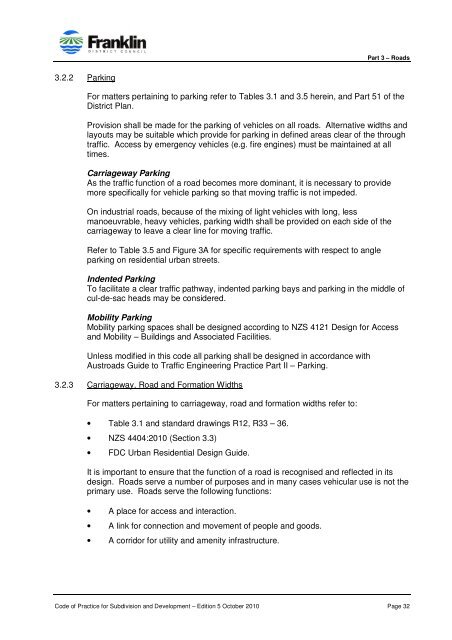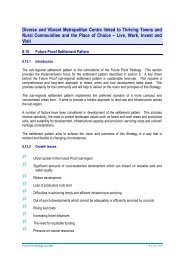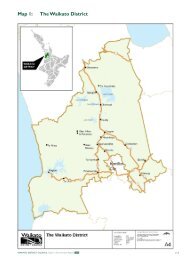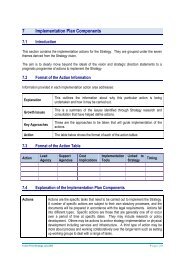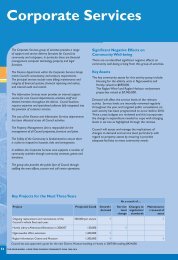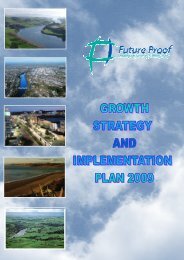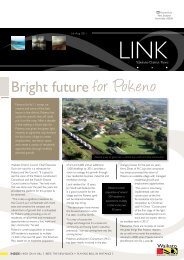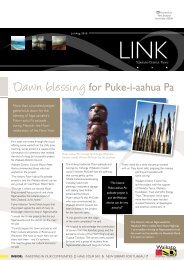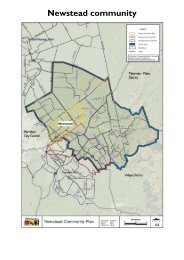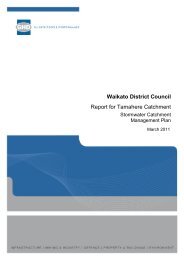CODE OF PRACTICE FOR SUBDIVISION AND DEVELOPMENT
code of practice for subdivision and development - Waikato District ...
code of practice for subdivision and development - Waikato District ...
Create successful ePaper yourself
Turn your PDF publications into a flip-book with our unique Google optimized e-Paper software.
Part 3 – Roads3.2.2 ParkingFor matters pertaining to parking refer to Tables 3.1 and 3.5 herein, and Part 51 of theDistrict Plan.Provision shall be made for the parking of vehicles on all roads. Alternative widths andlayouts may be suitable which provide for parking in defined areas clear of the throughtraffic. Access by emergency vehicles (e.g. fire engines) must be maintained at alltimes.Carriageway ParkingAs the traffic function of a road becomes more dominant, it is necessary to providemore specifically for vehicle parking so that moving traffic is not impeded.On industrial roads, because of the mixing of light vehicles with long, lessmanoeuvrable, heavy vehicles, parking width shall be provided on each side of thecarriageway to leave a clear line for moving traffic.Refer to Table 3.5 and Figure 3A for specific requirements with respect to angleparking on residential urban streets.Indented ParkingTo facilitate a clear traffic pathway, indented parking bays and parking in the middle ofcul-de-sac heads may be considered.Mobility ParkingMobility parking spaces shall be designed according to NZS 4121 Design for Accessand Mobility – Buildings and Associated Facilities.Unless modified in this code all parking shall be designed in accordance withAustroads Guide to Traffic Engineering Practice Part II – Parking.3.2.3 Carriageway, Road and Formation WidthsFor matters pertaining to carriageway, road and formation widths refer to:• Table 3.1 and standard drawings R12, R33 – 36.• NZS 4404:2010 (Section 3.3)• FDC Urban Residential Design Guide.It is important to ensure that the function of a road is recognised and reflected in itsdesign. Roads serve a number of purposes and in many cases vehicular use is not theprimary use. Roads serve the following functions:• A place for access and interaction.• A link for connection and movement of people and goods.• A corridor for utility and amenity infrastructure.Code of Practice for Subdivision and Development – Edition 5 October 2010 Page 32


